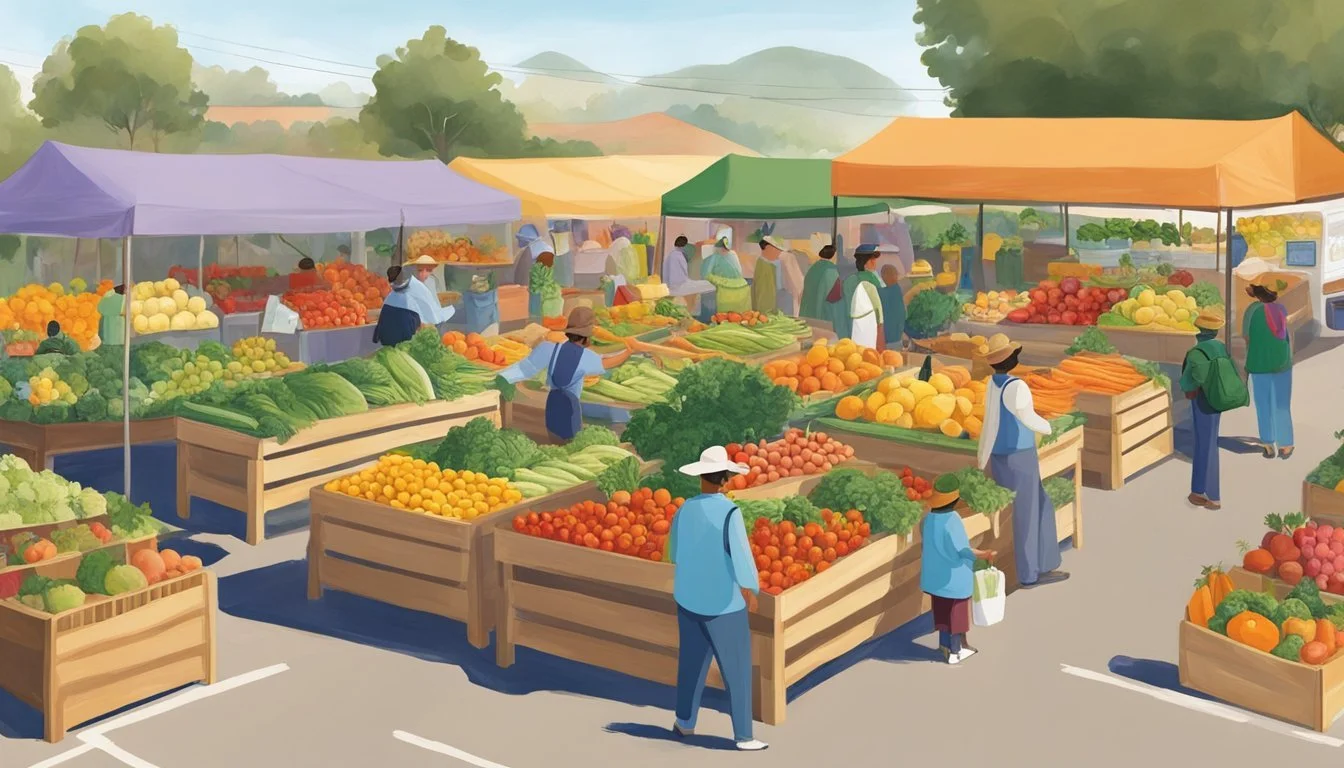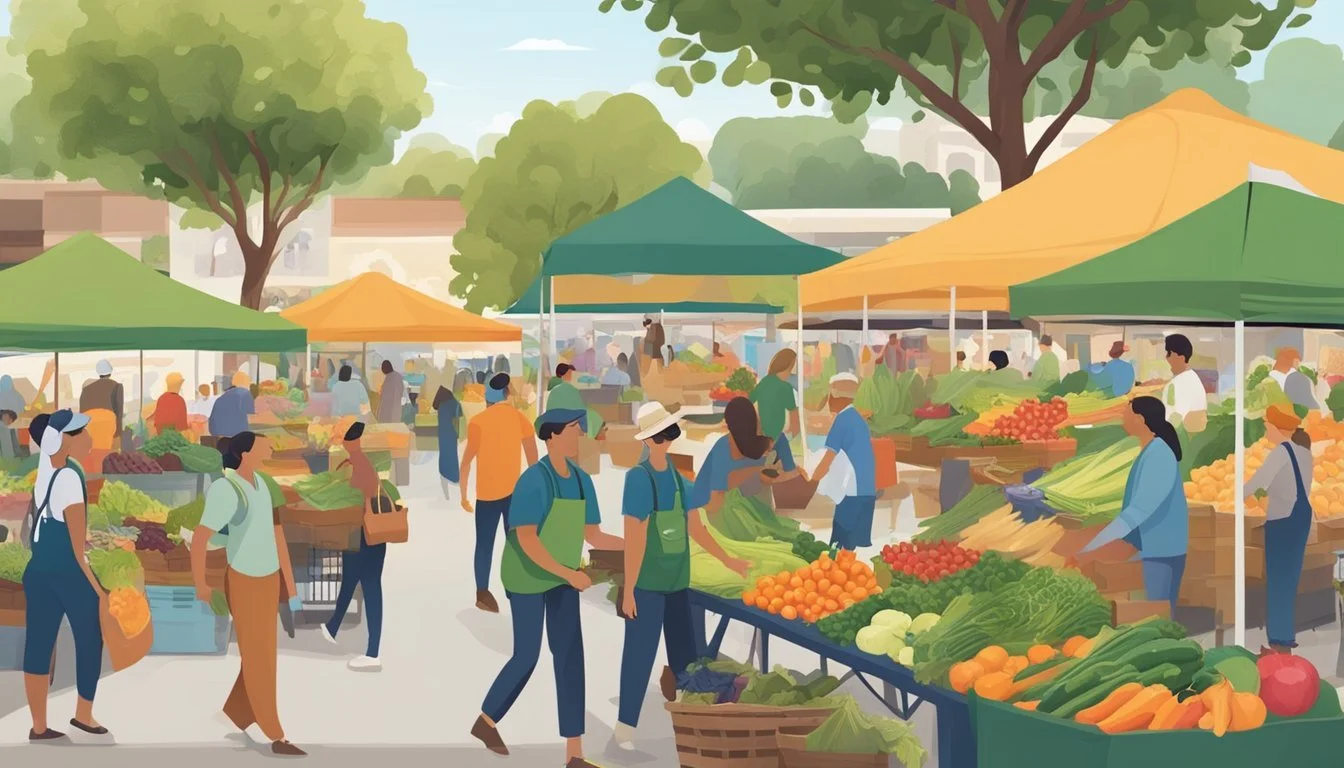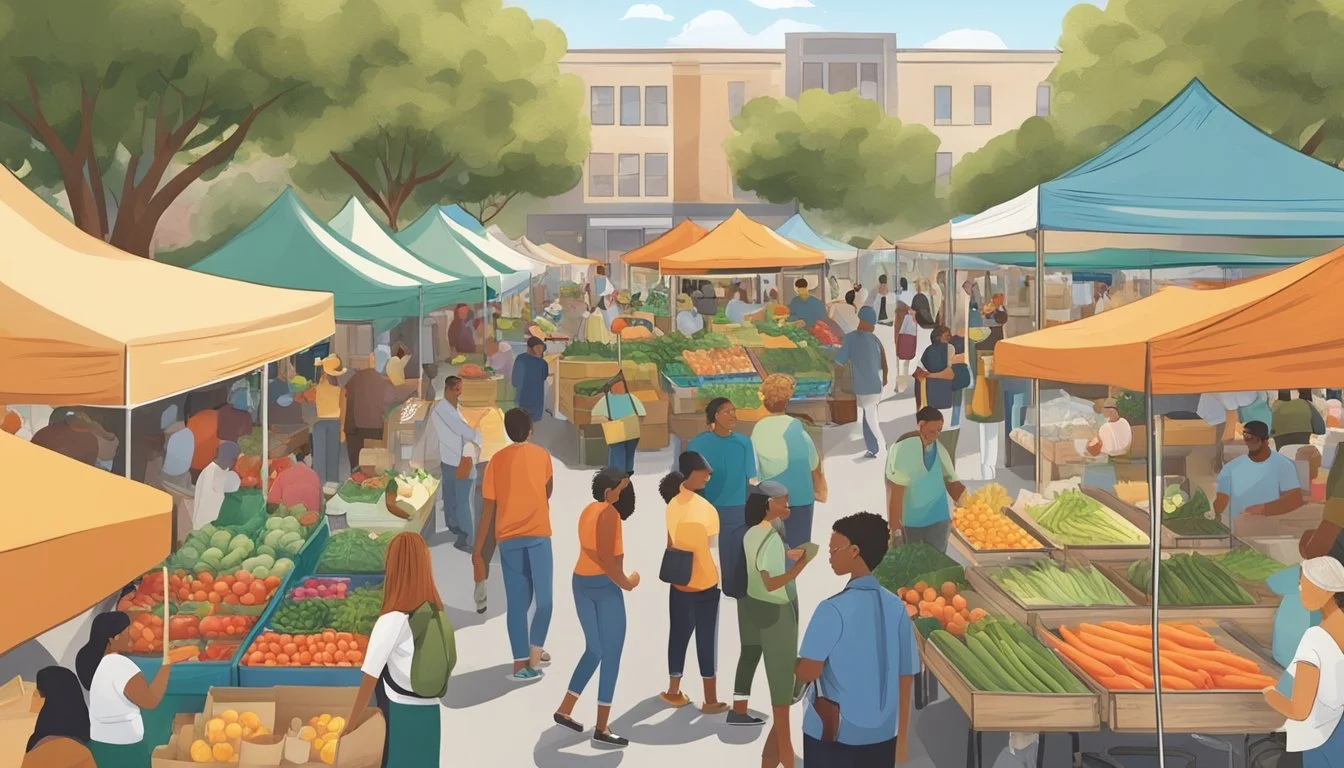Community Supported Agriculture (CSA) in Santa Clara, CA
A Guide to Local Produce and Farms
Community Supported Agriculture, or CSA, has taken root in the fertile grounds of Santa Clara, California, offering residents a meaningful way to directly engage with local agriculture. By purchasing shares from local farms, members receive a regular delivery of fresh, seasonal produce, thereby investing in their health and supporting the local economy. With the rich agricultural backdrop of Santa Clara and its proximity to both the ocean and the redwood forests, the produce from these CSAs is renowned for its quality and freshness.
CSAs in the Santa Clara region are more than just a transaction; they represent a partnership between farmers and consumers. This arrangement provides farmers with upfront capital to manage their operations while offering community members a chance to become immersed in the seasonal rhythms of agriculture. Through this model, consumers gain insight into the food production process and develop a closer relationship with the source of their food, fostering a greater appreciation for sustainable farming practices.
California has long been a pioneer in innovative agricultural practices, with Santa Clara being no exception. The farms involved in these programs often employ practices focused on sustainability and are deeply connected to the natural agriculture philosophy. As such, joining a CSA in Santa Clara not only supports local family and BIPOC farmers but also contributes to a broader movement of environmental stewardship and community resilience.
Benefits of Joining a CSA
Joining a Community Supported Agriculture (CSA) program in Santa Clara offers tangible advantages for community members. They gain access to fresh, locally-grown produce while contributing to the vitality and environmental sustainability of their region.
Freshness and Quality of Produce
Community Supported Agriculture programs prioritize the delivery of fresh, high-quality produce to their members. Unlike produce that is shipped over long distances, CSA shares usually consist of fruits and vegetables harvested at their peak. This not only ensures optimal flavor but also retains a higher nutrient content, beneficial to community health. CSA members often enjoy a selection that can include organic options, furthering the health benefits.
Support for Local Farmers
By participating in a CSA, individuals directly support local farmers. This model provides financial stability for growers as members pay in advance, allowing farmers to plan their crop cycles more effectively and invest in their operations. Farmers receive fair compensation for their labor, fostering a more sustainable local food economy and strengthening the bond between the community and those who grow their food.
Environmental Responsibility
CSAs embody environmental responsibility. Local farms tend to adopt more sustainable practices that have a smaller carbon footprint compared to industrial agriculture. Reducing food miles by sourcing produce from local growers results in lower transportation emissions. Furthermore, many CSA farms use organic farming techniques, which minimize or eliminate the use of synthetic pesticides and fertilizers, thereby reducing soil and water pollution. This model of agriculture benefits the entire ecosystem and promotes the well-being of Santa Clara's environment.
Understanding CSA Subscriptions
Community Supported Agriculture (CSA) subscriptions in Santa Clara provide an opportunity for consumers to purchase a share of a farmer's harvest, providing them with a regular supply of fresh, locally-grown produce.
How CSA Subscriptions Work
A CSA subscription allows individuals to become members of a farm for a season. By purchasing a share, they invest in the farm’s production and, in return, receive a regular delivery or pick-up of a box of farm products. The box typically contains an assortment of vegetables and fruits, and sometimes other items like eggs or flowers, depending on the farm's offerings.
Purchase: A consumer buys a share to become a CSA member.
Delivery: The farm provides a box of products to the member regularly, usually weekly.
Seasonal Variability in CSA Boxes
The contents of CSA boxes vary as they reflect the farm's seasonal production. During peak harvest periods, boxes are abundant with a variety of vegetables and fruits. In contrast, the selection may be more limited during the early or late parts of the season due to weather and crop rotations.
Summer: Expect a diverse range including tomatoes, berries, and leafy greens.
Winter: Root vegetables and hardy greens may be more prevalent.
Payment and Pricing Structure
The payment for a CSA subscription is usually made upfront at the start of the season. This payment supports the farm's operating expenses for the season. Pricing structures can vary, often depending on the quantity and variety of produce provided in the box. Some farms offer tiered pricing for different sizes of shares or options for additional products.
Upfront Payment: Generally required for the member to secure their share.
Pricing Scales: May vary based on box size, frequency of delivery, and additional products.
Types of CSA Programs
Community Supported Agriculture (CSA) in Santa Clara offers a variety of programs catering to the preferences of local consumers, from traditional farm shares to innovative collaborations and farm-to-table experiences.
Traditional CSA Farms
Traditional CSA farms offer shares of their harvest to members who subscribe. These local farms, often certified organic, connect directly with consumers. Members receive seasonal produce, ensuring their food is both fresh and sustainably sourced. Hidden Villa CSA, for instance, provides an array of vegetables and fruits grown on their historical 1650-acre farm, which has been promoting environmental education since 1924.
CSA Innovation Network
The CSA Innovation Network encompasses a group of farms that may implement creative approaches to CSA programs. They might offer additional products like dairy, meats, and artisanal goods alongside their typical produce shares. These farms might also provide more flexible subscription options, such as customizable share boxes or various pick-up and delivery methods, to better meet the needs of the community.
Farm-to-Table CSAs
Farm-to-Table CSAs take the traditional model a step further by partnering directly with local restaurants or offering meal kits. These programs aim to deliver not just ingredients but complete culinary experiences. They bridge the gap between raw produce and the dining table, emphasizing the connection between the land, the farmer, and the end consumer while enhancing the community's appreciation for the journey of their food.
Community Engagement and Education
Community Supported Agriculture (CSA) programs in Santa Clara, CA, not only provide residents with fresh, local produce, but also offer key avenues for community engagement and practical education on food-related matters.
Volunteering and Farm Visits
CSAs actively encourage community participation through volunteering opportunities and farm visits. Volunteers play a significant role in the daily operations of these farms, gaining hands-on experience in sustainable agriculture. By visiting a CSA farm like Hidden Villa, individuals can immerse themselves in various educational programs, such as environmental education and multi-cultural summer camps. Such initiatives offer a deeper understanding of the source of their food and the significance of eco-friendly farming practices.
Cooking and Preparation Tips
CSAs are known to distribute seasonal goods to their members, which sometimes include less familiar vegetables and fruits. To assist members with their shares, CSAs provide cooking and preparation tips. These practical guidelines help members to fully utilize their produce while learning new culinary skills. Moreover, this education extends to broader community health by promoting a diet based around seasonal, locally-sourced food.
CSA Membership and Commitment
Community Supported Agriculture in Santa Clara, CA embodies a partnership between local consumers and farmers, wherein members commit to supporting farms for a season by purchasing a share of the harvest in advance.
What Commitment Means for Members
When individuals become members of a CSA, they enter a seasonal commitment to support a local farmer. This pledge goes beyond a simple monetary transaction; it involves an agreement to share in the risks and bounties of agricultural production. Members pay for their shares before the harvest, which provides farmers with much-needed early-season capital. In return, members receive regular distributions, typically a box of fresh, seasonal produce, reflecting the current yield of the farm.
Freshness: Access to fresh, typically organic, produce.
Knowledge: Insight into seasonal eating and local agriculture.
Building Relationships with Farmers
The CSA model facilitates the development of a relationship between members and farmers. Members often have direct contact with the people growing their food, which can include farm visits and volunteer opportunities. This relationship fosters a deeper understanding of how food is produced and bolsters community ties.
Relationship Highlights:
Transparency: Members witness the farming process up close.
Support: Farmers receive direct, reliable support from community members.
Market Trends and Consumer Demand
In Santa Clara, CA, the rise of Community Supported Agriculture (CSA) reflects a noteworthy trend in consumer preferences towards organic and locally-sourced food. These choices are reshaping the market and reinforcing community food systems.
Demand for Organic and Local Food
Consumers in Santa Clara County show a pronounced demand for organic and local food. This inclination is supported by a combination of environmental awareness and a desire for quality produce. CSA programs, which offer shares of a farm's production, are particularly appealing because they guarantee the provision of fresh, seasonal crops directly to the consumer. This model has seen an exponential increase in popularity across the U.S. and mirrors trends in Santa Clara County.
Impact of CSA on Local Food Systems
The impact of CSA on Santa Clara's local food systems is multifaceted. By directly connecting farmers and consumers, CSAs foster a relationship that benefits the local economy and promotes sustainable agriculture. Consumers' investments in CSAs not only support the viability of local farms but also contribute to county planning efforts aimed at recognizing key hubs in the community. It's evident that CSAs have become integral components of Santa Clara's food system, addressing both social and spatial aspects of food distribution in the region.
Challenges Facing CSAs
Community Supported Agriculture (CSA) programs in Santa Clara face a multitude of challenges. These range from economic pressures to the variability of weather and the rigors of maintaining product quality. Each challenge requires careful management for CSAs to remain successful.
Economic and Financial Challenges
CSAs must balance the cost of sustainable farming practices with the need to provide affordable shares to their members. The cost of land, particularly in a high-value area like Santa Clara, can be exorbitant, impacting the financial viability for new and small-scale farmers. Startup costs are significant, and the financial risk borne by farmers can be high, as CSA income is often variable and dependent on successful seasons and consistent membership.
High land costs: Impacting the ability to expand or maintain profitability.
Startup expenses: Can deter the establishment of new CSAs.
Variable income: Membership fluctuations can lead to unstable financial conditions.
Weather and Seasonal Challenges
Weather patterns, which can be unpredictable, directly influence the agricultural yield. A single poor season due to drought or excessive rainfall can significantly affect a CSA's ability to supply its members with a consistent variety of fresh produce. Furthermore, changes in climate patterns can disrupt the traditional growing season, forcing CSAs to adapt their planting and harvest schedules.
Unpredictable weather: Affects yield and food access.
Changing seasons: Requires adaptation in crop selection and timeframe for planting and harvest.
Risk of crop failure: Influences the stability of the CSA's operation and revenue.
Ensuring Consistent Quality and Variety
A CSA aims to provide a rich diversity of produce, but this can be challenging. Farmers must have a deep understanding of soil health to manage a successful harvest of vegetables, fruits, and flowers. As the CSA ages, maintaining soil fertility is crucial. Additionally, they are tasked with the anticipation of member expectations for quality and variety, which requires expert planning and crop rotation.
Soil health management: Vital to sustaining a variety of crops as the CSA ages.
Consumer expectations: Maintaining a high-quality assortment of produce to meet member demand.
It is essential for CSAs to navigate these challenges with strategized planning and community engagement to ensure a stable and robust local food system.
Financial Assistance Programs
Community Supported Agriculture (CSA) initiatives in Santa Clara, California, often intersect with financial assistance programs, providing affordable access to fresh, local produce. These programs facilitate the inclusion of all community members regardless of income, ensuring nutritious food is within reach.
SNAP and EBT Programs
In Santa Clara, individuals who benefit from the Supplemental Nutrition Assistance Program (SNAP) can use their Electronic Benefits Transfer (EBT) cards to purchase CSA shares. This mutually beneficial arrangement supports local agriculture while making seasonal, fresh produce available to SNAP recipients.
SNAP: Facilitates food purchasing for low-income individuals
EBT Cards: Allow SNAP benefits to be used electronically
CSA Shares: Consist of a portion of a farm's produce offered regularly to members
Food Bank Partnerships
Several CSA farms in Santa Clara partner with local food banks, streamlining the process for those in need to receive freshly harvested produce.
Food Bank: Collaborates with CSA programs
Partnerships: Enable distribution of fresh food to income-challenged households
Local Produce: Comes directly from the CSA farms in the community
These partnerships often involve the Farms Together initiative, enhancing the reach of family and BIPOC farmers to provide essential food to families in need while contributing to the local economy.
Local CSA Directory
Community Supported Agriculture, known as CSA, offers a way to buy local food directly from farmers. This directory focuses on CSA farms within Santa Clara, CA, providing a comprehensive list and guidance to help individuals select the CSA that suits their needs.
List of CSA Farms in Santa Clara
Frog Hollow Farm CSA, Brentwood, CA: Known for its organic stone fruit, this CSA also offers a variety of organic produce to members.
Live Earth Farm, in the Santa Cruz Mountains foothills, provides a wide range of organic vegetables and fruits and has been serving the community since 1995.
Further listings can be obtained from the LocalHarvest website, an online resource that compiles CSA options available in Santa Clara.
How to Choose the Right CSA
When considering a CSA, individuals should ask themselves specific questions to ensure alignment with their preferences:
Type of Produce: Is variety important, or are there specific kinds of fruits or vegetables desired?
Pick-up or Delivery Options: Can the CSA accommodate preferred logistics?
Farm Practices: Does the CSA adhere to organic or sustainable farming methods?
Community Involvement: Is there an opportunity to visit the farm or engage with the community?
Selecting the right CSA involves considering these factors to ensure a satisfying and beneficial experience with local agriculture.










